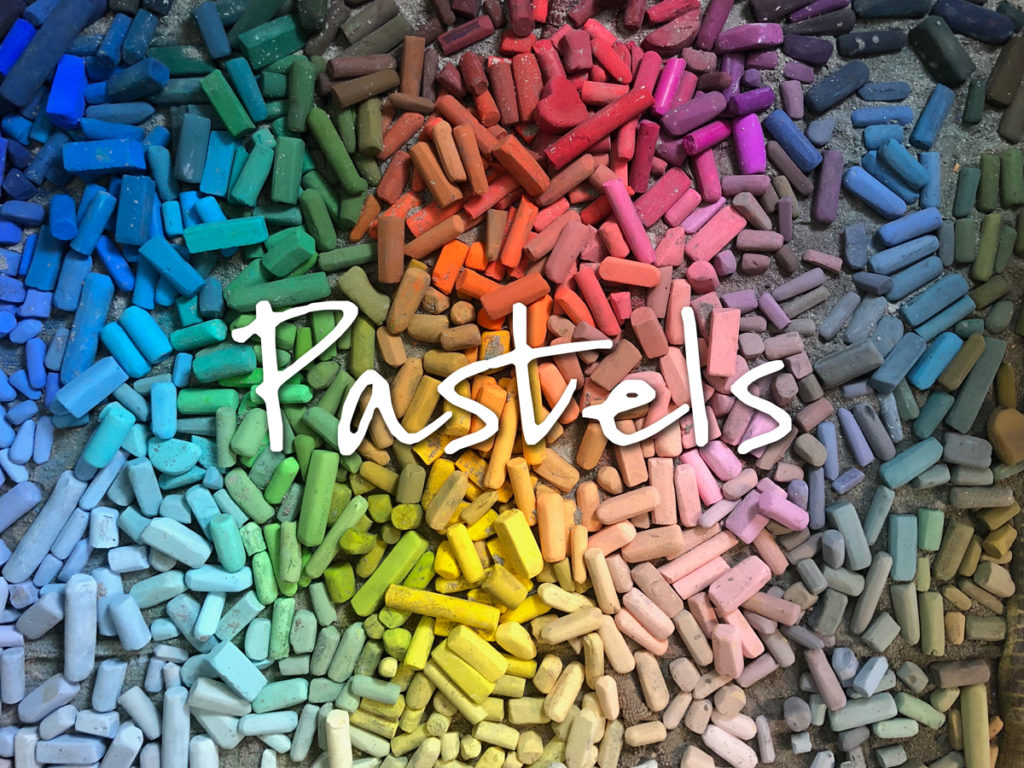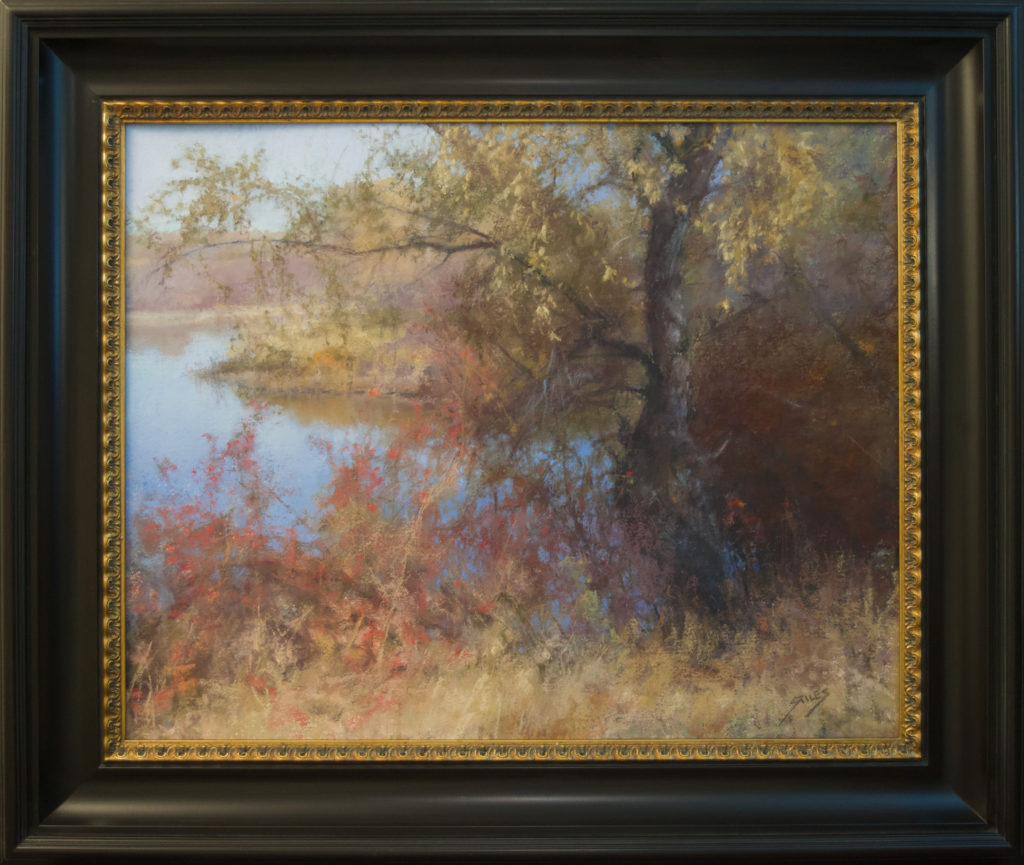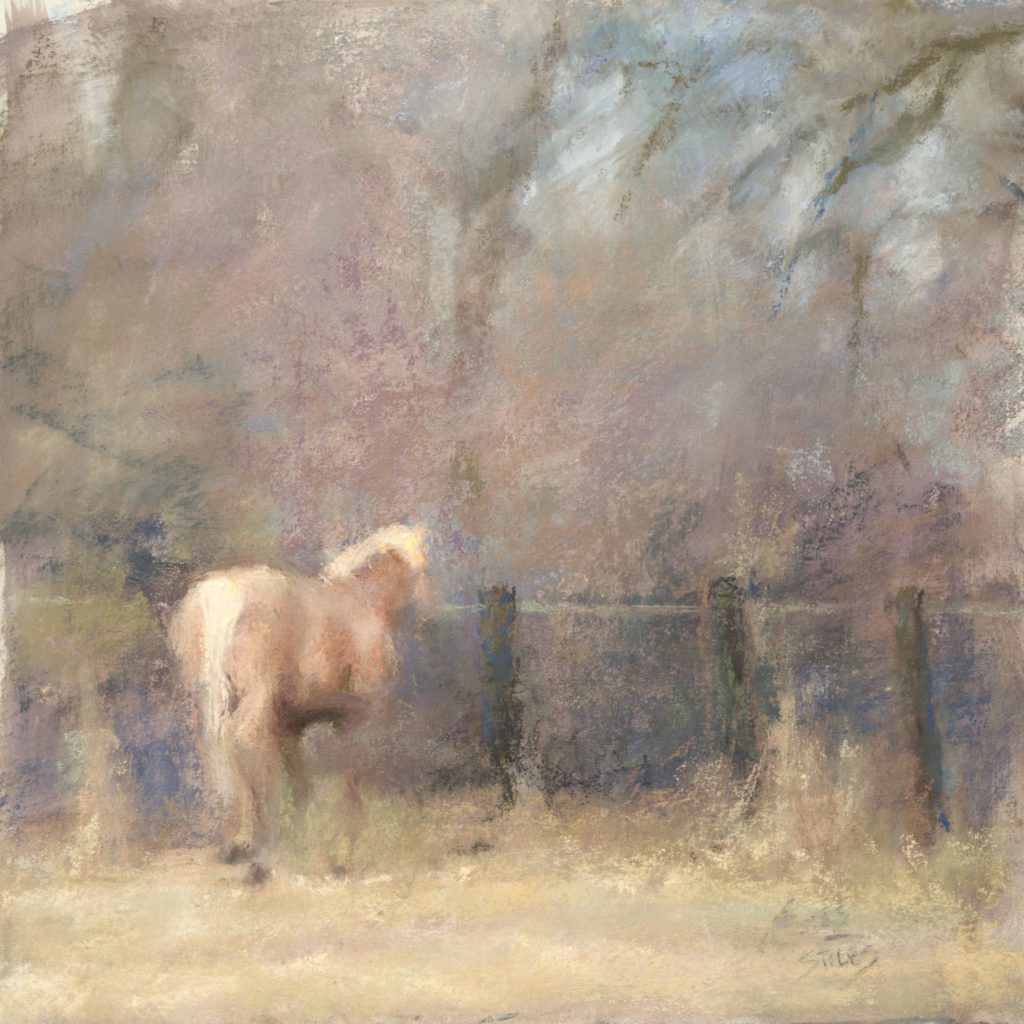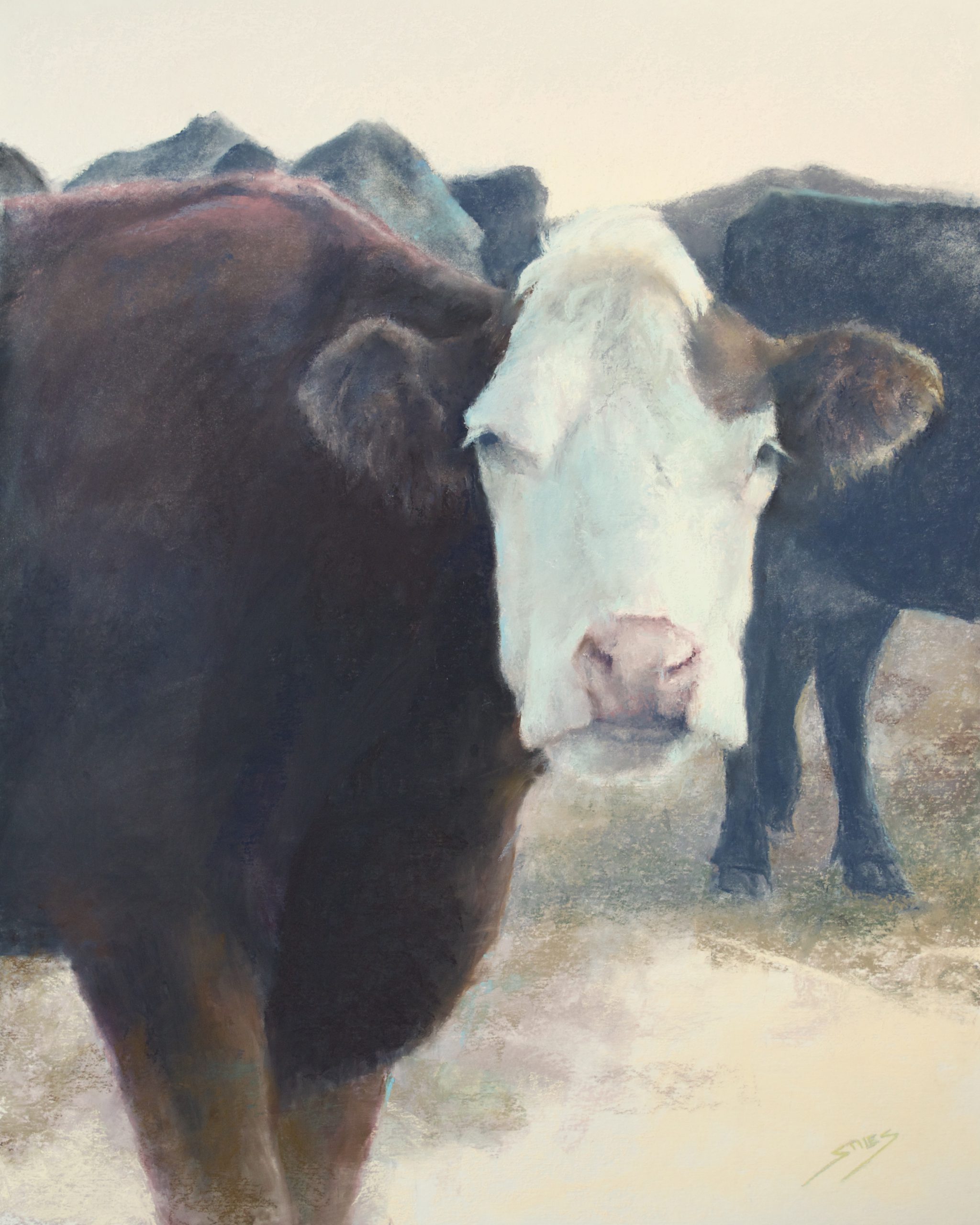
Sabrina Stiles is a Colorado-based pastel artist with an expressive style that lends itself to her chosen medium. Primarily a landscape artist, Stiles draws inspiration from cloudy days that allow for softer light and feminine expression. Of her work, the artist shares that each has its own story, its own struggle. “You go through something with every painting,” she says. Whether the scene finds the artist, or the artist finds the scene, she doesn’t know, but she is inspired by her travels and the landscape near her home in Longmont, Colorado. Below, Stiles shares her take on dry pastel as her medium of choice.
A pastel is an art medium in the form of a stick, consisting of powdered pigment and just enough binder to hold it together. The pigments are the same as those used to produce other mediums, such as oil paint. The color effect of pastels is closer to the natural dry pigments than that of any other process. One of the most seductive qualities of pastels is the intensity of the pure pigment and the almost unlimited availability of hue. Of course, that may also be considered a downfall since it is more difficult to mix the exact color you desire. You just can’t help yourself from collecting every color available, as can be seen in my palette of pastels.
Pastels have been used by artists since the Renaissance and gained considerable popularity in the 18th century, when a number of notable artists made pastel their primary medium. Due to the purity of the medium, it tends to be very stable, meaning the colors won’t yellow with age. I own a lovely pastel painting dated 1918 that looks as if it were painted yesterday. That said, I recommend any pastel be framed under glass to protect it from smudging and environmental damage. Thank goodness for non-reflective glass, which is more expensive, but a necessary addition to a fine art pastel. And, its qualities make the glass hardly noticeable.

Pastels as a medium are very versatile and can be used to draw and paint. Using the side of the pastel provides a stroke much like a paint brush. It can be applied heavily or thinly. It is an opaque medium and can be lightly scumbled over another color allowing some of the base color to peek through. It is perhaps one of the most versatile mediums as it can also be used in conjunction with all other mediums, as it is so close to pure pigment. This allows for the possibility of under paintings in other mediums or creating washes with oil mediums/solvents.

The possibilities seem endless to me and I’m always experimenting. I love drawing with charcoal and have recently been using it in the initial value block in. I also love applying a watercolor wash underpainting. While most artists prefer a sanded paper, which grabs the pastel and holds it, I prefer a smooth surface or hand-textured surface. This seems to allow more fluidity of the dry medium and allows for more translucent passages. It feels like the best of both worlds to me, the fluidity of oil paint coupled with the immediacy (no need to wait for drying) of pastel.
Another technique I use is a spray of Spectrafix (casein and alcohol mix) or water and alcohol to cause drips, set the pastel or paint into with a brush. I do a lot of layering to get the result I’m looking for in a piece. I take lots of breaks during the process so I can get a fresh view when I return to the easel. A fresh eye helps me see where the painting might need an adjustment.
While I use photographs as reference material, they are just that. Copying a photograph directly never results in a great painting. Early on I did a lot of plein air painting. Now I tend to spend more time in the studio where I have more control over the process. I go with my gut. When the piece resonates with me, it usually appeals to others as well.

In my paintings, no matter whether they are representational or non-representational, I am trying to convey my feelings about the subject. With the cow paintings, particularly the Leona series, I want to share their charm. They are such a staple of our western landscape. Cows exhibit a lot of personality! While I’m not a slave to the photograph, it can be a bit tricky to be loose and painterly while keeping the anatomy in check.

The more abstracted landscape pieces usually start with a surface I like. It could be a scrap cut from another painting that has interesting marks, the shadow left after brushing off an unsuccessful painting or it could be a heavily hand textured board. Then I choose a palette of several pastel sticks that I like and use intuition to begin and see where it leads me. These pieces are fun and energizing. I feel like there is nothing to lose which is very freeing. It either works or it doesn’t. I’m not trying to depict anything in particular, I just let the process lead me.